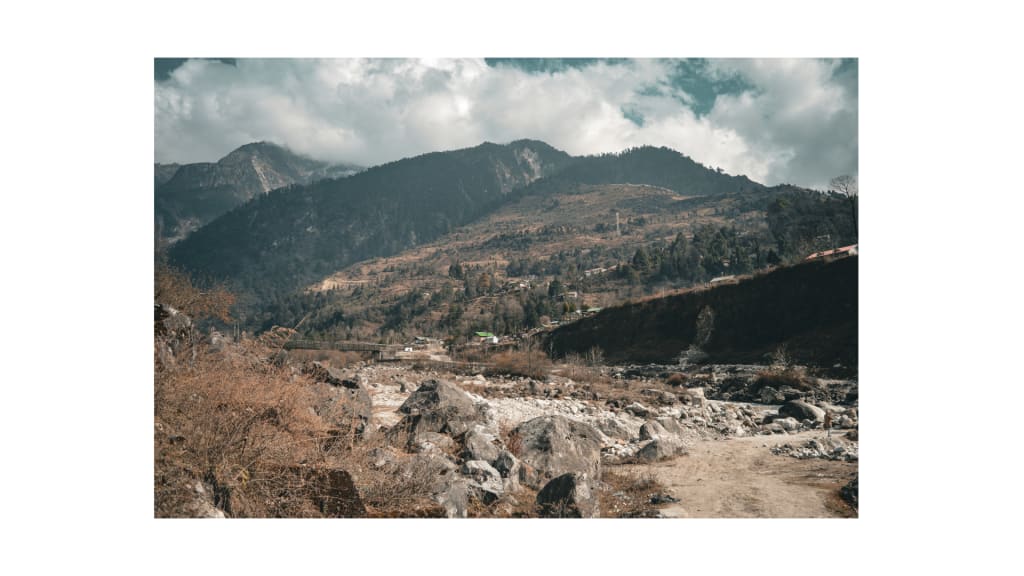High Altitude Litterbugs: Mount Everest's Trashy Reality
Peak Pollution

Spring is going time for climbers who desire to summit Mount Everest, Earth's highest peak above sea level. Many mountain climbers from around the world travel to Asia in April and May and set out towards base camps in Nepal and Tibet.
But rugged peaks won't be the main thing they see. Particularly on Everest's all the more vigorously navigated Nepal side, they'll track down fields of garbage - including cans, bottles, plastic, and human and animal waste.
Every year, over 60,000 travelers and climbers visit the Sagarmatha National Park and Buffer Zone, a high-altitude area of the Khumbu district in northeast Nepal that incorporates Everest and seven different peaks. Around 400 to 500 climbers attempt to summit Everest consistently.
The trash issue previously became evident during the 1980s and 1990s, while climbing on the mountain and trekking in Khumbu started to increase. Climber and trekkers numbers have additionally skyrocketed in the past 20 years.
Most of this issue centers around negative and sensational viewpoints, for example, the frozen bodies of climbers who remain where they died on the mountain as evacuation tasks are hazardous and costly.
The researchers who study geoscience and mountain topography, and one (Alton Byers) have lived in Nepal and worked with communities around Everest. They have urged to see increased efforts to address Everest's massive trash issue. In view, modern technology and international collaboration are critical to end the pileup of waste in this iconic setting.
Pollution from waste
For most visitors to this region of the Himalayas, Everest base camp on the upper ranges of the quickly receding Khumbu Glacier is the ultimate location, at a height of 17,589 feet (5,364 meters). Previously a two-to-three- week journey from Kathmandu, today the excursion is probably going to start at the Lukla Airport, which sits around 35 miles (60 kilometers) from base camp.
Climbers who aim for to highest point of Everest spend as long as two months on the mountain, including weeks making short, steady risings above base camp and back down once more. This empowers them to adapt to the altitude before moving to higher camps and afterward to the summit.
A significant part of the food and equipment headed to Everest also starts its journey at Lukla. Some are delivered to base camp by helicopter, yet a significant part of the gear is carried there by yaks, yak/dairy cattle crossbreeds called dzopkio, donkeys, and horses.
Lots of equipment, food, and packaging, in addition to animals and porters, implies a ton of trash. A recent report estimated that the park produced 4.6 lots of solid waste each day during peak tourist periods in April-May and October-November.
Eventually, most of this denial is unloaded into unattractive landfills relatively close to neighborhood villages. There it is burned, adding particulates and poisonous chemicals to the air. The excess debris is covered, where it can contaminate groundwater.
At the base camp, microplastics - possibly from disposed mountaineering clothing, tents, ropes, and boots - have been found in water and snow tests. Elevated degrees of perfluoroalkyl and polyfluoroalkyl substances, or PFAS, commonly known as "forever chemicals," have been found on the Khumbu glacier, presumably from materials used to waterproof climbing boots, tents, and clothing.
These substances could pose health risks for transient climbers but are a more serious threat to individuals who live in the nearby settlements of Gorak Shep, Lobuche, Dugla, and Pheriche for most of the year. Some of these locals work at Everest base camp and are exposed there too.
And then there's sewage. Most septic tanks at the hotels situated all through the national park and buffer zone release, further polluting groundwater. Camp Four, the last site that climbers are involved in before they attempt to summit Everest, is covered with trash and frozen, wind-swept feces.
National parks in developed nations have the infrastructure to deal with waste management, rubbish pickup, reusing, and wastewater treatment. At Everest base camp, there are simply collection barrels under toilets. Every year, exactly 50,000 pounds (22,000 kilograms) of human waste are brought to landfills a few kilometers away.
Answers for feasible tourism
Perceiving the scale of this issue, initiatives are in progress to foster solutions.
The Sagarmatha Pollution Control Committee, started by local Sherpa individuals in 1991, is an Indigenous nonprofit organization that is liable for checking trash in the permit-required mountains and peaks. The group focuses on litter control and periodic base camp cleanups.
In 2014, the government of Nepal started requiring each mountaineer who climbs over the Everest base camp to bring back 18 pounds (8 kilograms) of solid waste from the mountain or forfeit a US$4,000 deposit.
A nonprofit called Sagarmatha Next, established in 2019, is working to promote sustainable tourism in the Khumbu region, cooperating with organizations and companies from around the world. The group has brought issues to light by creating artworks and souvenirs from the rubbish. It also launched a "Carry Me Back" program that urges tourists to take two-pound (one-kilogram) bags of solid waste, like destroyed plastic bottles, to the airstrip at Lukla for processing and disposal in Kathmandu.
At the local government's request, the University of Colorado Boulder fostered a feasible solid waste management plan in 2019 for the national park and buffer zone. The Coronavirus pandemic postponed the implementation of the plan, which proposes making a five-step process: waste segregation, collection, sorting and shredding, moving to shipment stations, and transportation to reusing facilities in Kathmandu.
One more nonprofit drive, the NeverRest Project, was made during the pandemic to give natural solutions for Mount Everest and another fragile ecosystems all over the world. NeverRest is working with the Nepal Tourism Board to revolutionize high-height waste management utilizing modern innovation.
In 2023, the organization introduced an ideal plan for a sustainable Everest base camp that would introduce technology, for example, convenient solar tents to reduce the use of fossil fuel; gender-neutral versatile urinals with multi-use filters that convert urine into water; incinerator toilets that change human waste into ash; and modular geodesic dome tents intended for effective heat retention to decrease energy use.
In the long time since Sir Edmund Hillary and Sherpa Tenzing Norgay made the first known successful climb of Mount Everest, this peak has been a setting for daring expeditions, wins, and misfortunes. Let's trust that the region's trash issue soon will blur into history as new methodologies and innovations give answers for Everest and other far-off high-mountain areas all over the world.
About the Creator
shanmuga priya
I am passionate about writing.
Enjoyed the story? Support the Creator.
Subscribe for free to receive all their stories in your feed. You could also pledge your support or give them a one-off tip, letting them know you appreciate their work.






Comments
There are no comments for this story
Be the first to respond and start the conversation.